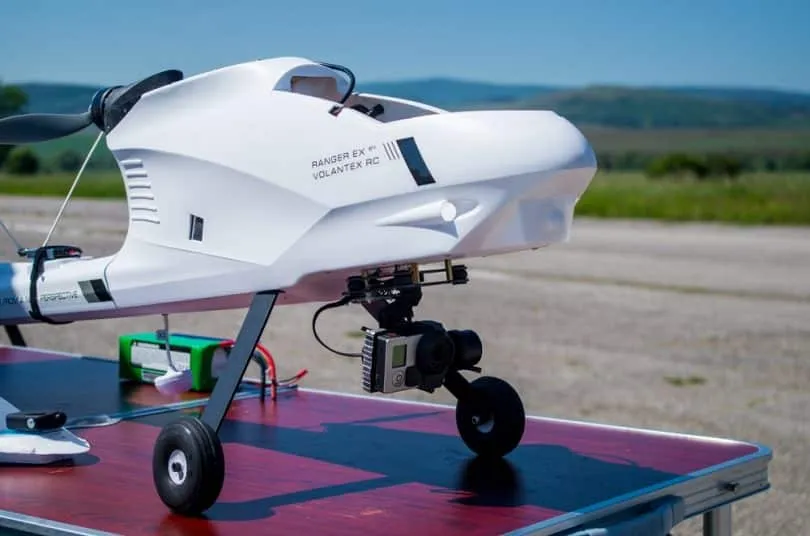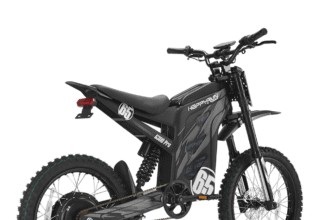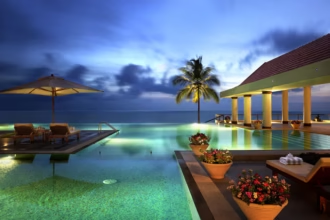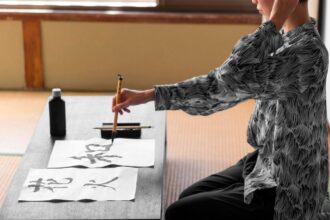Flying RC airplanes has evolved dramatically with the integration of onboard cameras, transforming a simple hobby into an immersive aerial photography experience. Whether you’re capturing breathtaking landscape shots, recording your flight maneuvers, or simply enjoying a bird’s-eye view of your surroundings, the right camera setup can make all the difference. Modern RC airplane cameras offer capabilities that were once reserved for professional equipment, now accessible to enthusiasts at various skill levels.
Selecting the perfect camera for your RC airplane involves balancing multiple factors including video quality, weight constraints, durability, and ease of use. The market offers countless options, from lightweight action cameras to specialized FPV systems, each designed for different flying styles and purposes. Understanding what features matter most for your specific needs will help you avoid costly mistakes and ensure you get the most enjoyment from your aerial adventures. This guide will walk you through everything you need to know to make an informed decision.
Understanding Your Needs
Before investing in an RC airplane camera system, take time to assess your primary objectives. Casual fliers who want occasional aerial footage may prioritize affordability and simplicity, requiring nothing more than a basic action camera that captures decent video without complicated setup procedures. Serious aerial photographers need higher resolution capabilities, gimbal stabilization, and advanced control features to produce professional-quality content. FPV racing enthusiasts have entirely different requirements, focusing on low-latency video transmission and lightweight cameras that won’t compromise flight performance. Your experience level also matters significantly—beginners benefit from user-friendly systems with straightforward installation, while advanced pilots can handle more complex configurations that offer greater customization and performance optimization.
Types of RC Airplanes with Cameras
RC airplanes with camera capabilities generally fall into two main categories that determine how much assembly and configuration you’ll need to handle. Ready-to-Fly models come completely assembled with the camera already installed and configured, requiring minimal effort beyond charging batteries and performing basic pre-flight checks. These options appeal to beginners or those who want to start flying immediately without technical complications. Plug-and-Play models offer more flexibility, arriving mostly assembled but requiring you to add your own transmitter and sometimes install the camera system yourself. This approach gives experienced pilots greater control over component selection and allows for customization based on specific preferences. PNP models typically cost less initially but demand more technical knowledge and may require additional purchases to complete the setup, making them better suited for hobbyists who enjoy the building process and want tailored performance characteristics for their particular flying style.
Key Features to Consider
Camera resolution stands as the foundation of image quality, with most modern options offering at least 1080p HD video, though 4K cameras provide superior detail for those wanting professional-grade footage. Frame rate matters equally—30fps works fine for casual recording, but 60fps or higher produces smoother video during fast maneuvers and allows for slow-motion playback. Weight becomes critical since every gram affects flight performance and battery consumption; cameras under 50 grams work best for smaller aircraft, while larger planes can accommodate heavier systems with gimbals. Field of view determines how much scenery you capture, with wide-angle lenses (around 170 degrees) being popular for immersive footage, though they can introduce fisheye distortion. Stabilization technology separates amateur from professional results—electronic image stabilization helps, but mechanical gimbals deliver the smoothest footage by physically counteracting aircraft movements. Battery life varies dramatically between models, with most action cameras running 60-90 minutes per charge, though cold weather and high-resolution recording drain power faster. Mounting options and durability complete the equation; look for cameras with versatile mounting systems and rugged construction that can withstand vibrations, temperature changes, and occasional rough landings without failing.
How to Choose the Right RC Airplane Camera
Start by determining your budget range, which will immediately narrow your options and prevent you from wasting time researching equipment beyond your means. Entry-level systems typically run between $50-150 and work well for beginners learning the basics, while mid-range options ($150-400) offer better image quality and features for serious hobbyists, and professional setups can exceed $500 with advanced gimbals and high-end cameras. Next, match the camera weight to your airplane’s specifications—check your aircraft’s payload capacity in the manual and subtract the weight of any existing equipment to determine how much your camera system can weigh without compromising flight characteristics. Heavier cameras require larger planes with more powerful motors and bigger batteries.
Consider your intended use case carefully before making a final decision. If you plan to share footage online, prioritize video quality and stabilization over other features. For FPV flying, low latency matters more than recording resolution since you need real-time feedback for navigation. Racing enthusiasts should focus on the lightest possible cameras with adequate visibility rather than 4K recording capabilities. Research mounting compatibility by examining your airplane’s design—some models have dedicated camera bays, while others require custom mounts that you’ll need to fabricate or purchase separately. Many manufacturers like FMS Model design their aircraft with camera integration in mind, offering dedicated mounting solutions that simplify installation and reduce setup time. Read reviews from pilots flying similar aircraft to yours, as they’ll highlight compatibility issues and performance characteristics specific to your plane type. Finally, verify that replacement parts and accessories are readily available, since cameras on RC planes inevitably need repairs or upgrades after crashes or component failures.
Battery Life and Charging
Battery performance directly impacts how long you can fly and record footage during each session. Most RC airplane camera systems draw power from the aircraft’s main battery, though some setups use separate batteries for the camera to avoid draining flight power. Typical flight times range from 10 to 30 minutes depending on your airplane’s size, motor efficiency, and camera power consumption. Action cameras with their own batteries offer the advantage of not affecting flight time but add extra weight and require you to manage charging for multiple devices. Consider investing in several spare batteries so you can swap them quickly between flights rather than waiting hours for recharging. Modern lithium polymer batteries charge in 45-90 minutes with proper chargers, though fast-charging can reduce battery lifespan over time. Always use the manufacturer’s recommended charger and never leave batteries unattended while charging, as improper charging poses safety risks. Cold weather significantly reduces battery performance, sometimes cutting flight time by 30-40 percent, so keep batteries warm before use and land earlier than usual during winter flying sessions.
Outdoor Adventures
Taking your RC airplane camera outdoors opens up spectacular filming opportunities, but requires careful consideration of environmental factors and aircraft capabilities. Wind resistance becomes your primary concern—larger planes with higher wing loading handle gusty conditions better than lightweight models that get tossed around easily. Choose aircraft with brushless motors and adequate power-to-weight ratios for outdoor flying, as they maintain stability and control even when facing headwinds. Weather-resistant cameras protect your investment from moisture, dust, and temperature extremes encountered during outdoor sessions. Morning and evening flights often provide the best lighting conditions for photography, with softer shadows and golden hour colors that enhance landscape footage dramatically. Open fields, beaches, and rural areas offer ideal flying locations with minimal obstacles and unrestricted airspace, though always verify local regulations before launching. Consider visibility range when planning outdoor flights—bright color schemes on your aircraft help maintain visual contact at distance, which remains essential even when using FPV systems. Pack essential field equipment including spare batteries, basic tools, a landing pad to protect your camera during takeoffs and landings, and a first aid kit for emergencies. Seasonal considerations matter too, as summer heat can cause electronics to overheat while winter cold reduces battery performance and makes plastic components more brittle and prone to breaking during impacts.
Making the Right Choice for Your Aerial Photography
Choosing the perfect RC airplane camera requires balancing your specific flying goals with practical considerations like weight, budget, and technical expertise. Whether you’re a beginner seeking simple ready-to-fly solutions or an experienced pilot wanting professional-grade footage with advanced stabilization, the market offers options tailored to every skill level and purpose. Focus on the features that directly support your primary use case rather than chasing specifications that sound impressive but don’t align with how you actually fly. Remember that camera weight affects flight performance significantly, so always verify your aircraft’s payload capacity before purchasing equipment.
Start with a modest setup that matches your current abilities, then upgrade components as your skills and requirements evolve. Pay attention to battery management, environmental conditions, and local regulations to ensure safe and legal flying sessions. The best camera system is one you’ll actually use consistently rather than the most expensive option with features you’ll never need. Take time to research user experiences from pilots flying similar aircraft, test different mounting positions to find optimal angles, and always carry spare batteries for extended filming sessions. With the right camera setup properly matched to your RC airplane and flying style, you’ll capture stunning aerial footage that brings new dimensions to your hobby.




![Watch~[VIRAL]~VIDEO: Pink Hoodie Hijab Fight Twitter Video Original](https://reelsmedia.co.uk/wp-content/uploads/2024/09/0_daX3pEgv43no39Ly-330x220.webp)











